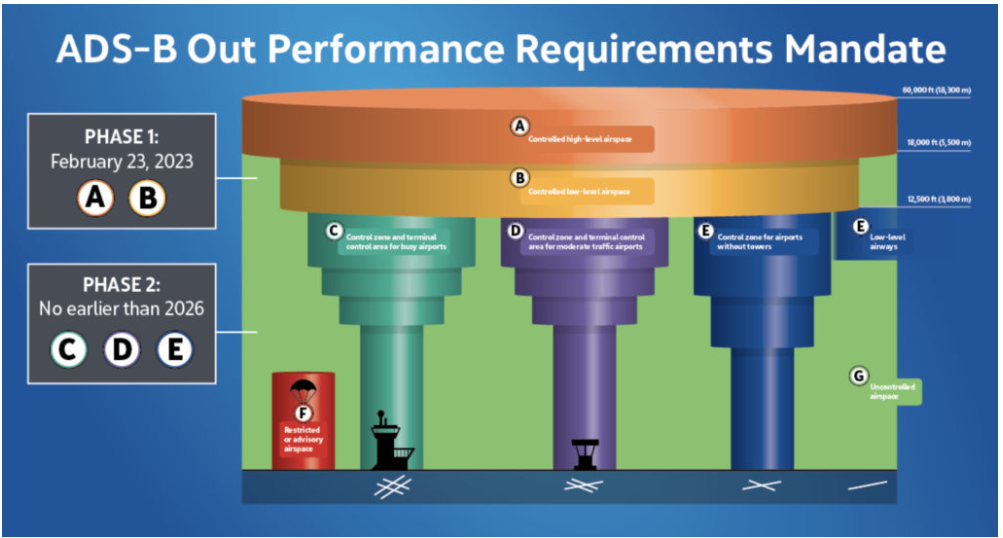Canadian ADS-B mandate
Effectivity: All Learjet aircraft
ATA: 34
By: Michael Naish – Customer Support EngineeringBeginning February 23, 2023, all Learjet aircraft will be required to be equipped with Automatic Dependent Surveillance – Broadcast Out (ADS-B) for Class A and Class B airspace (see Figure 1) in Canada. This applies to Learjet aircraft operating in Canadian airspace between 12,500 ft (3,800 m) to 60,000 ft (18,300 m).
Figure 1
All Learjet aircraft will be required to be equipped with the following to be in compliance with the ADS-B mandate:
Be equipped with an appropriate transponder with ADS-B out capabilities and performance with applicable standard of Radio Technical Commission for Aeronautics (RTCA) DO-260B, “Minimum Operational Performance Standards,” or newer.
Have antenna capability for broadcast toward space-based ADS-B receivers emitting 1090 MHz extended squitter. This requirement can be met either through antenna diversity (the use of top and bottom antenna(s)) or with a single antenna that is capable of transmitting both towards the ground and up towards satellites.
The Learjet ADS-B solutions listed below all comply with the Canadian ADS-B mandate:
Learjet 40 – Service Bulletin 40-34-23
Learjet 45 – Service Bulletin 45-34-36
Learjet 60XR – Service Bulletin 60-34-23
Learjet 70/75 – Production Standard ADS-B Installation
The Learjet installations for TCAS II on the Learjet 31/31A, 35/35A, 36/36A, 55/B/C and 60 all add upper fuselage transponder antenna(s) for diversity. Aircraft that used one of the Learjet solutions to install TCAS II, along with a third-party ADS-B installation with a RTCA DO-260B transponder would also comply with the Canadian ADS-B mandate.
If your aircraft operates in Canadian airspace and you do not have top transponder antenna(s), contact your preferred Bombardier Service Centre or your Regional Manager to discuss possible options for your aircraft.

